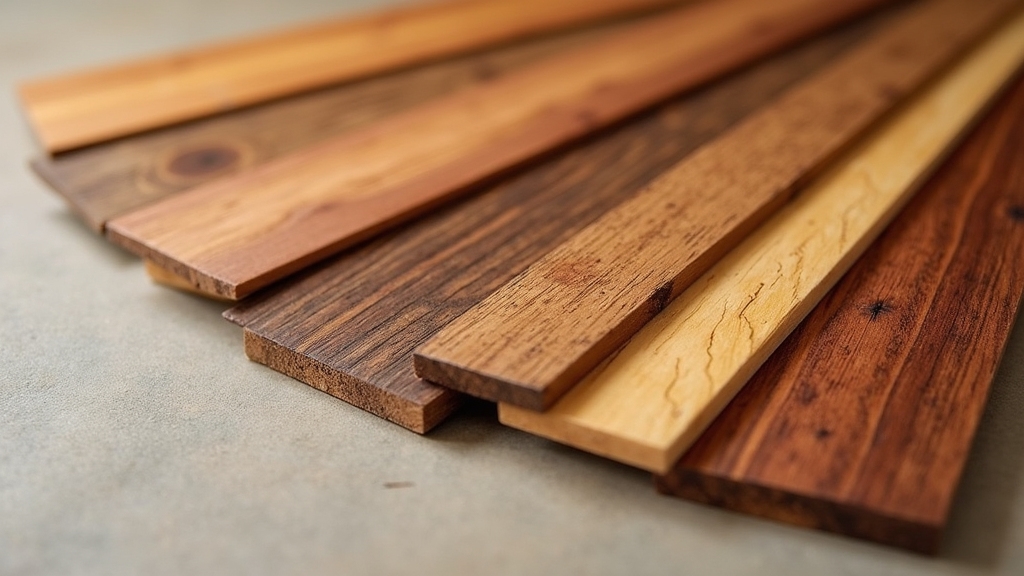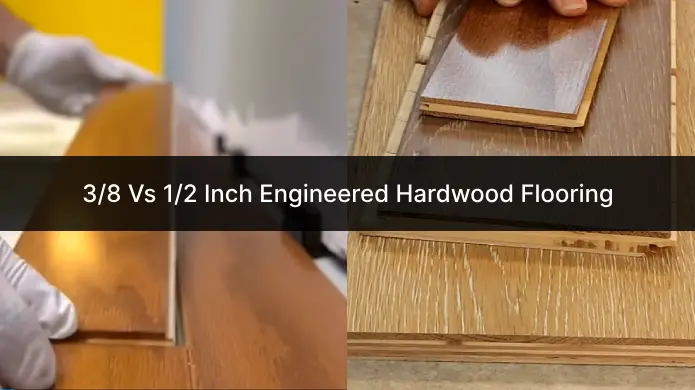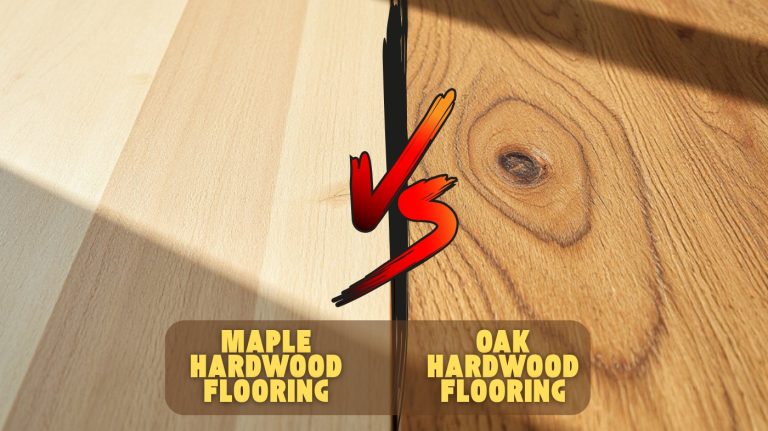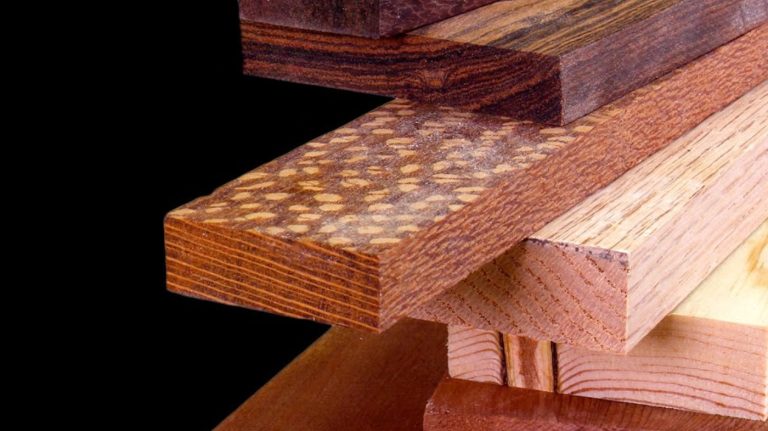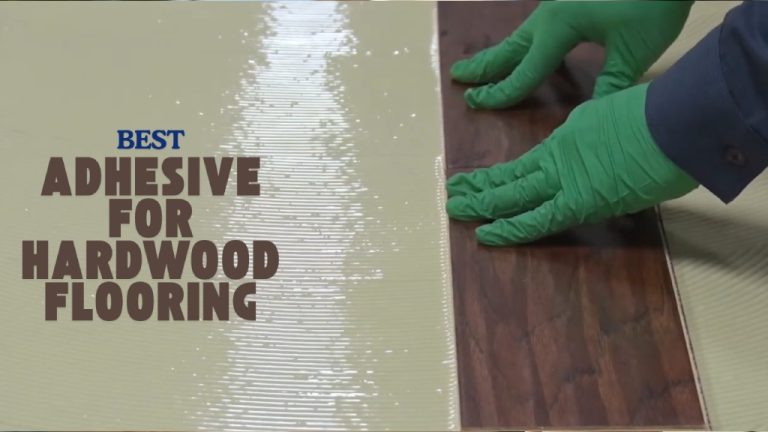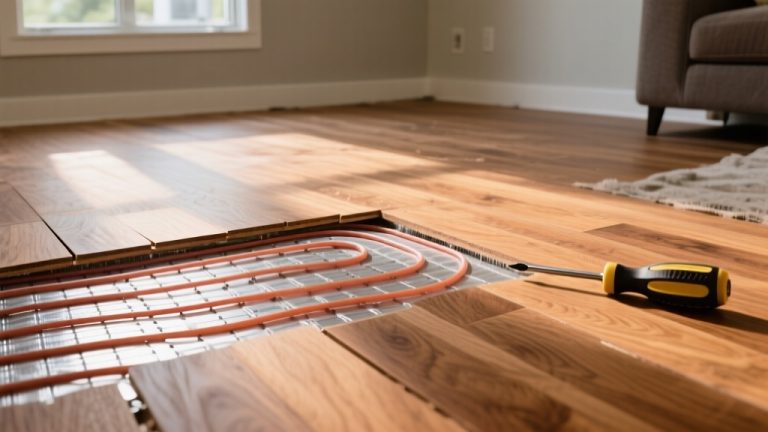Different Types of Hardwood: Balance Aesthetic & Workability
When choosing hardwood, you’ll find species like Oak, Maple, Cherry, and Ash, each with distinct hardness, grain patterns, and durability. Oak offers open grain and strength, Maple is dense with fine texture, Cherry provides rich color and smooth grain, and Ash excels in shock resistance.
Exotic options like Wenge and Rosewood add striking visuals but require special care. Your project’s needs wear resistance, aesthetic, and workability determine the best fit. Exploring these factors reveals how hardwood types make a vital difference.
Key Takeaways
- Common hardwoods include oak, maple, cherry, ash, and exotic species like mahogany and zebrawood, each with distinct grain and color.
- Hardwood durability varies widely, with species like ipe and hickory offering high hardness for heavy-use flooring and outdoor applications.
- Regional availability affects hardwood choice, with maple and birch common in the Northeast, and walnut and southern yellow pine prevalent in the Southeast.
- Grain texture ranges from coarse open pores in oak to fine closed grains in maple and cherry, influencing finish and aesthetic appeal.
- Hardwood workability depends on hardness and grain; softer woods like cherry are easier to machine, while dense exotics require specialized tools.
Comparison Table for Different Hardwood Types
| Hardwood Type | Janka Hardness (lbf) | Grain & Texture | Color & Visual Appeal | Durability / Use |
|---|---|---|---|---|
| Red Oak | 1,290 | Open, coarse grain | Reddish tones, traditional | Medium durability, residential flooring & furniture |
| White Oak | 1,360 | Fine, tighter grain | Light to medium brown, uniform | Water-resistant, versatile furniture & flooring |
| Hard Maple | 1,450 | Fine, even grain | Creamy, uniform | High durability, flooring & heavy-use furniture |
| Hickory | 1,820 | Coarse, wavy grain | Pale to medium brown | Very durable, heavy-use furniture & flooring |
| Black Cherry | 995 | Fine, straight grain | Reddish-brown, smooth | Cabinetry & high-end furniture |
| Ash | 1,320 | Straight, smooth grain | Light color | Shock-resistant, tool handles, flooring |
| European Beech | 1,300 | Tight, uniform grain | Light brown | Durable, furniture, tools, kitchenware |
| African Mahogany | 1,070 | Straight, coarse grain | Reddish-brown | Cabinetry & boatbuilding |
| Ipe (Exotic) | 3,510 | Dense, tight grain | Dark brown | Extreme durability, outdoor/high-traffic |
| Brazilian Cherry (Jatoba) | 2,350 | Fine, interlocked grain | Reddish tones | High durability, flooring |
| Wenge (Exotic) | 1,930 | Coarse, tight grain | Very dark brown, striking | Luxury furniture & cabinetry |
| Padauk (Exotic) | 1,720 | Medium, straight grain | Vibrant crimson, matures to deep reddish | Decorative veneers & inlays |
| Zebrawood (Exotic) | 1,200 | Interlocked, striped grain | Distinctive striped patterns | Luxury accents & furniture |
| Teak | 1,155 | Straight, coarse | Golden brown | Outdoor furniture & boatbuilding |
| Soft Maple | 950 | Fine, even | Creamy white to light brown | Furniture, cabinetry, veneers |
| Eastern Red Cedar | 900 | Straight, soft grain | Reddish hues | Cabinetry, closets, decorative uses |
Common Hardwood Species and Their Characteristics
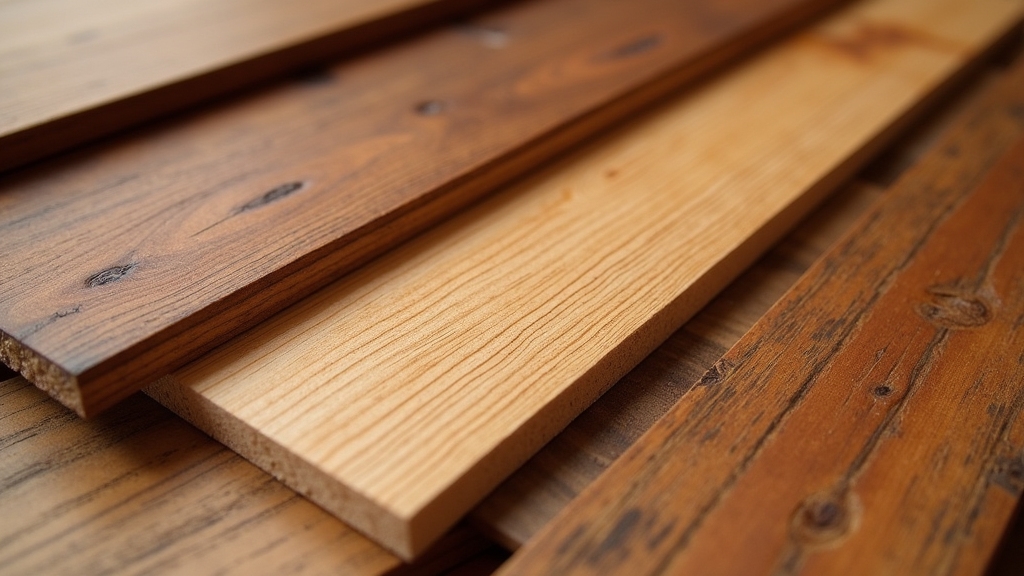
Although hardwood species vary widely in their properties, understanding the characteristics of common types like oak, black cherry, maple, ash, European beech, and African mahogany is essential for selecting the right material for your project.
Knowing key hardwood traits like oak, cherry, and mahogany guides smart material choices for your projects.
Red oak grows fast with large pores and an open grain, showcasing reddish tones. In contrast, white oak offers a finer grain, greater durability, and water resistance due to the presence of tyloses. However, care should be taken when securing rugs or coverings on hardwood floors, as improper adhesives can cause surface damage.
Black cherry features a fine, straight grain with a smooth texture and reddish-brown hues. It’s prized for high-end furniture making and is often harvested from prime timberland in regions such as Pennsylvania and Ohio, supporting sustainable forestry practices.
Maple, available as both hard and soft varieties, provides dense, creamy wood with an even grain, making it suitable for durable applications. When used in flooring, it is important to avoid using double-sided carpet tape that can leave adhesive residue or cause discoloration on the wood finish.
Ash is strong yet flexible, with a light color and excellent shock resistance. Its smooth, consistent grain also takes stain and finishes well, making it popular for flooring and tool handles.
European beech is hard and wear-resistant, featuring a tight grain pattern. African mahogany presents reddish-brown tropical wood valued in cabinetry and boatbuilding.
Hardness Ratings of Popular Hardwood Varieties
Understanding the specific hardness of hardwood species helps you select the right material based on durability and wear resistance requirements. The Janka hardness test quantifies wood resistance to denting and wear, and selecting materials with appropriate hardness can also influence the choice of protective measures such as kitchen mats to prevent damage.
Extremely hard varieties like Ipe (3,684 lbf) and Black Ironwood (~3,660 lbf) excel in high-traffic applications due to their density. It is important to note that some woods labeled as hardwoods, like pine and Douglas fir, are actually softer woods but are still commonly used in flooring and furniture due to other desirable qualities.
Very hardwoods such as Hickory (1,820 lbf) and Hard Maple (1,450 lbf) balance toughness with workability, ideal for flooring and heavy-use furniture. Complementing such durable woods with waterproof and stain-resistant mats can further extend their longevity by protecting against spills and scratches.
Medium hardwoods including Red Oak (1,290 lbf) and Teak (1,155 lbf) offer moderate hardness with additional benefits like weather resistance.
Softer options like Cherry (995 lbf) and Eastern Red Cedar (900 lbf) suit cabinetry and decorative uses where less abrasion occurs. Knowing these ratings helps ensure durability aligns precisely with your project’s functional demands. The Janka scale provides a reliable way to compare relative hardness even when species have multiple common names or variations.
Regional Varieties and Their Typical Uses
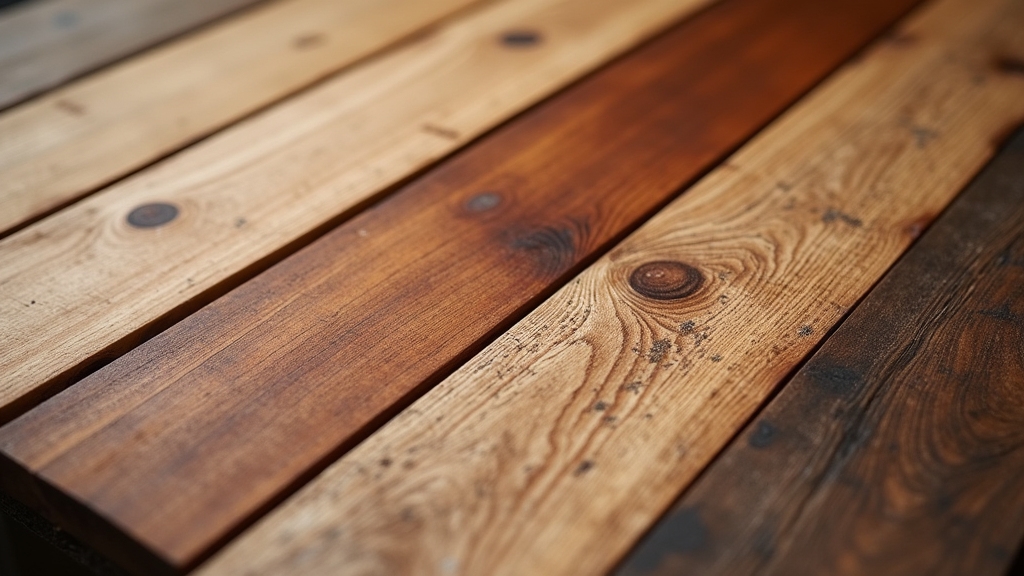
When selecting hardwood for your project, considering regional varieties can optimize both performance and aesthetics. In the Northeast, yellow birch offers heavy, strong wood ideal for durable use. Sugar maple excels in flooring and cabinetry due to its hardness and consistent grain.
Southeastern selections like southern yellow pine provide strength for construction. Black walnut suits high-end furniture with its rich hue. The Midwest features hard maple for extreme hardness applications and ash for shock-resistant furniture.
Northwestern species such as Oregon white oak and Pacific madrone offer unique regional character for flooring and custom woodwork. Central U.S. and Plains areas rely heavily on red and white oak for durable furniture and flooring, with ash serving as a stable, moisture-resistant alternative.
Selecting regionally optimizes wood function and longevity. It is also important to use proper cleaning solutions to maintain hardwood floors’ durability and appearance over time.
Grain Patterns and Aesthetic Qualities of Hardwood
You’ll notice hardwood grain texture varies from coarse, open pores in oak to fine, closed grains in maple. This directly impacts surface feel and finish absorption. The grain patterns are influenced by the growth rings and the way the log is sawn during milling, creating unique visual effects.
Proper preparation, such as cleaning and sanding, is essential to ensure the wood surface is ready for finishing and buffing. Color ranges widely from the warm, reddish tones of cherry to the deep browns of walnut. These variations affect the visual depth and richness of your project.
Understanding these differences helps you select hardwood that aligns precisely with your aesthetic goals. Buffing techniques and correct grit sequencing can further enhance the wood’s natural beauty after installation. It also ensures the wood meets your functional needs, whether for durability or smoothness.
Grain Texture Variations
How do variations in grain texture influence the appearance and performance of hardwood? Grain texture, defined by pore size and growth ring patterns, directly affects both.
Open grain hardwoods, like oak, have large pores creating coarse, deep textures with visible swirls and waves. This lends a rustic character but requires more finishing effort. Proper finishing techniques are essential to protect open grain wood from moisture and staining.
Closed grain hardwoods, such as maple and cherry, feature smaller pores and tighter grain. This yields smooth, uniform surfaces ideal for polished, modern aesthetics.
Even grain with uniform growth rings produces consistent texture, while uneven grain with wavy rings results in striking, variable patterns. Even grain is typical in woods such as Birch and Maple, contributing to their uniform appearance.
Texture also impacts stability; coarse grains may absorb moisture unevenly, while close grain enhances dimensional stability. Understanding these grain texture variations helps you select hardwood tailored to both visual preference and functional demands.
Color and Visual Appeal
Although grain texture sets the foundation, the color and visual appeal of hardwood largely depend on the interplay between heartwood and sapwood hues and their distinct grain patterns.
Heartwood colors range from reddish browns (Red Oak, Pecan) to deep blacks (American Black Walnut). Sapwood often contrasts with pale cream or white tones (White Oak, Hickory). This contrast creates a striking “ribboning” effect, especially in species like Hickory and Walnut.
Grain patterns—from straight and even in Hard Maple to interlocked and dynamic in Tigerwood—further enhance aesthetics. Geographic origin and processing methods such as steaming influence color uniformity and sapwood darkening. Proper maintenance, including regular gentle cleaning, helps preserve these visual qualities over time.
You’ll find lighter woods ideal for bright, contemporary spaces, while darker, richly hued species add depth and formality. Oak, for example, has two varieties: red oak, which offers more color variation, and white oak, known for its more uniform appearance, helping designers select the best fit for their projects based on oak varieties.
Workability and Durability Considerations
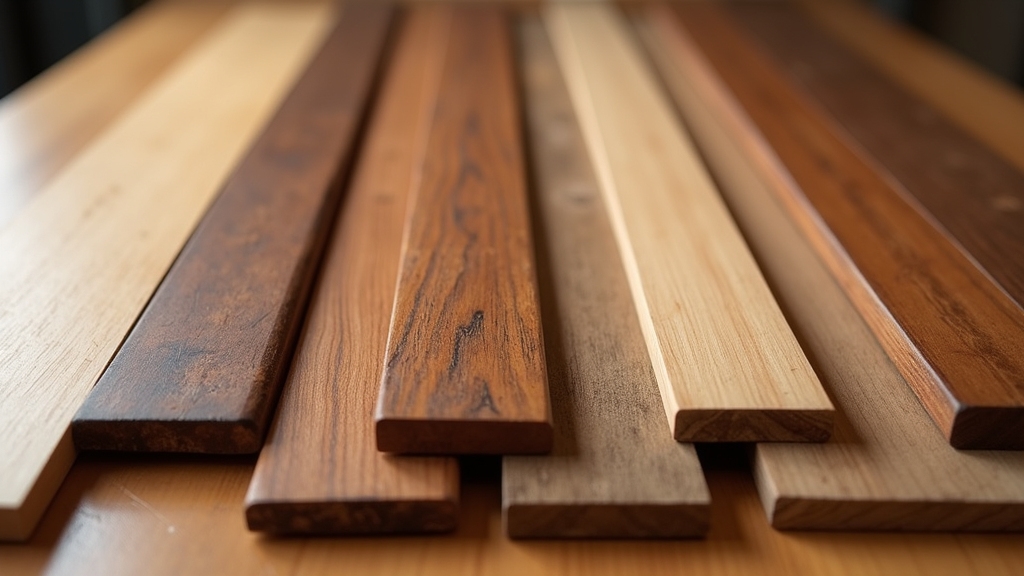
When selecting hardwood for your project, understanding the interplay between workability and durability is essential. Hardness, measured by the Janka scale, dictates both resistance to wear and ease of machining. Proper underlayment provides a cushioned, stable base that can enhance the longevity of hardwood flooring installations.
Hard maple, for example, is about 15% harder than red oak, making it more durable but slightly more challenging to shape. Grain structure also influences workability; straight, fine grains ease cutting and finishing, while irregular grains complicate these tasks.
Each hardwood species also offers unique coloration and grain patterns that can influence the aesthetic outcome of your project.
Hard maple’s greater hardness boosts durability but demands more effort to shape; smooth grains improve workability.
Durability depends not only on hardness but also on wood’s elasticity and failure mode. Woods like hickory fail gradually, offering safer structural use, whereas many dark woods snap suddenly under stress.
You should balance hardness and grain with your project’s demands. High-traffic flooring requires woods above 1000 lbf Janka rating, while intricate carving benefits from softer, stable species that resist warping. Selecting the right subfloor preparation and underlayment type can further protect and maintain the hardwood’s performance over time.
Specialty Hardwood Types and Their Unique Applications
You’ll find that exotic hardwoods like Zebrano and African Black Ironwood offer exceptional durability and unique hardness profiles tailored for both decorative and high-stress applications. Proper cleaning methods are essential to maintain their finish and prevent damage from excess moisture.
Their distinct grain patterns and density make them ideal for specialty furniture, flooring, and intricate carvings where both aesthetics and function matter.
Understanding these woods’ physical properties helps you select the right material for precise design requirements. The diverse grain patterns and natural characteristics of these hardwoods allow for enhanced finishes and long-lasting performance in various settings.
Exotic Hardwood Varieties
Since exotic hardwood varieties encompass a broad spectrum of species with distinct visual, physical, and mechanical properties, understanding their unique characteristics is essential for selecting the appropriate material for specialized applications.
You’ll find species like Padauk offering vibrant crimson hues that mature elegantly, while Wenge provides dark, coarse textures ideal for luxury cabinetry.
Brazilian Cherry’s rich reddish tones and durability make it perfect for high-traffic flooring. Sapele’s shimmering grain suits fine furniture and veneers, emphasizing aesthetic appeal alongside workability. These hardwoods typically have higher density, contributing to their durability and longer lifespan in finished products.
Padauk’s bold coloration enhances decorative veneers and inlays. Cumaru excels in outdoor and high-traffic flooring due to resilience. Wenge demands UV-protectant finishes to preserve deep color. Iroko mimics teak affordably for mid-century modern furniture and decking.
Species such as Goncalo Alves from Brazil are also prized for their durability and striking patterns, adding to the diverse options available in exotic hardwoods. Choosing sustainably sourced exotics guarantees compliance with regulations and market stability.
Durability and Hardness
Although selecting hardwoods involves balancing aesthetics and cost, understanding durability and hardness is essential for specialty applications that demand long-lasting performance. You’ll rely on the Janka hardness rating to quantify resistance to denting and wear, as it is the standard measure for wood hardness.
Hickory, with a rating of 1,820, stands as the hardest common domestic hardwood. It’s ideal for heavy-traffic areas but requires specialized installation due to its density. However, its dense nature can also make installation challenging, requiring more effort and skill to handle. Hickory’s excellent strength and shock resistance make it a preferred choice for tool handles and flooring.
Hard Maple (1,450) offers excellent durability with a more uniform grain. However, it demands controlled humidity to maintain its integrity. Its high Janka rating provides good wear resistance, making it suitable for flooring applications.
White Oak (1,360) balances hardness and workability, featuring moisture resistance thanks to natural tannins. This balance makes it a popular choice for a variety of design aesthetics and functional uses. Among oak species, Live Oak surpasses White Oak in hardness, though it is less commonly available.
Red Oak (1,290) suits high-traffic residential use with good durability and traditional grain patterns. Its moderate hardness allows for easier workability compared to denser woods.
Exotic options like Ipe (3,510) and Brazilian Cherry (2,350) provide superior hardness for extreme durability but increase installation complexity and cost. These species often require specialized tools and expertise due to their extreme hardness. Their tightly packed cell structures contribute to exceptional density and wear resistance.
Decorative and Functional Uses
Specialty hardwoods offer distinct advantages that extend beyond durability, serving both decorative and functional purposes in various industries. You’ll find European Oak and African Mahogany widely used for furniture, cabinetry, and veneers due to their structural integrity and aesthetic appeal.
Walnut and Cherry enhance high-end designs with their unique colors and grain patterns. Functionally, American Ash excels in tool handles and sports equipment, while Teak’s natural oils make it ideal for outdoor use and boatbuilding. Their high density contributes to the strength required for such applications.
Zebrawood’s striking striped grain suits luxury accent pieces. Rosewood’s rich hues and luster enhance inlays and decorative furniture. European Beech provides durability in tools, kitchenware, and musical instruments. Soft Maple supports veneer production and machinable furniture components.
Selecting Hardwood Based on Project Needs
When selecting hardwood for your project, you must consider hardness, durability, visual characteristics, workability, and availability to make certain the material meets your functional and aesthetic requirements.
For durable flooring or furniture, Red Oak offers medium hardness and stability at a reasonable cost. White oak is especially valued for its water-resistant properties, making it suitable for outdoor furniture.
If you need a striking interior accent with rich coloration, Walnut’s lower hardness suits trim and cabinetry despite its higher price and moderate workability. For projects requiring carving or bending, Maple and Beech provide ease of workability, with Beech excelling in curved components.
Hickory’s exceptional hardness suits heavy-use items but demands skill due to grain complexity. Finally, consider availability: Beech and Red Oak supply is reliable and cost-effective, while Walnut, Cherry, and Hickory may affect budget and accessibility depending on your region.
Frequently Asked Questions
How Should Hardwood Be Stored to Prevent Warping or Cracking?
You should store hardwood in a clean, dry, and well-ventilated area, elevated off the ground on flat foundations. Stack boards flat and level, using evenly spaced stickers between layers for airflow.
Monitor moisture content regularly, keeping it between 6% and 8%. Seal lumber ends and acclimatize wood before use. Avoid direct sunlight, heat sources, and high humidity. Applying protective finishes further prevents cracking and warping during storage.
What Are the Environmental Impacts of Harvesting Different Hardwood Species?
You mightn’t realize, but harvesting hardwood species releases between 3.5 to 4.2 billion tons of CO2 annually, primarily from mechanized felling and forwarding. This process disturbs soil, emits fossil fuel pollutants, and accelerates carbon loss through residue burning and root decay.
Selectively logging and thinning also contribute profoundly. The impact varies by species due to commercial value-driven overexploitation, which harms biodiversity and soil stability, worsening climate and ecological consequences.
How Can I Identify Hardwood Types Without Professional Tools?
You can identify hardwood by closely inspecting color, grain patterns, and end grain with a magnifying glass. Sand small areas to reveal fresh color and pores. Test density by weight and hardness with a scratch or fingernail test.
Use the air-blowing test on water-soaked splits to detect tyloses, distinguishing species like white oak. Smell freshly cut wood for distinctive odors. Cross-reference observations with reliable photo guides or mobile apps for accuracy.
Are There Health Concerns When Working With Certain Hardwood Dust?
Imagine your lungs as delicate filters; inhaling hardwood dust is like clogging them with fine grit. Yes, certain hardwood dusts pose serious health risks.
Prolonged exposure can cause occupational asthma, nasal cancer, and chronic sinusitis. You might also develop dermatitis from skin contact. Tropical hardwood dusts are especially hazardous.
Always control dust levels and wear protective gear to avoid respiratory and allergic complications. Don’t underestimate these invisible dangers in your workspace.
What Finishes Best Protect Hardwood Furniture From Moisture Damage?
To best protect hardwood furniture from moisture damage, you should apply oil-based polyurethane or marine varnish. Oil-based polyurethane creates a durable, hard, waterproof layer, sealing out moisture effectively.
Marine varnishes add UV resistance and superior water protection, ideal for high-humidity areas. For extreme moisture exposure, epoxy sealers provide an even more impermeable barrier. Always apply thin, even coats, sanding between layers to guarantee maximum protection and longevity.
Choosing the Right Hardwood for Your Project Needs
Now that you know the distinct hardness, grain patterns, and durability of various hardwoods, how will you choose the perfect type for your project? Whether you need a tough, wear-resistant wood or a visually striking grain, understanding these characteristics guarantees ideal results.
By selecting hardwood based on specific needs—be it regional availability, workability, or specialty applications—you’ll guarantee both functionality and aesthetic appeal in your final product.

